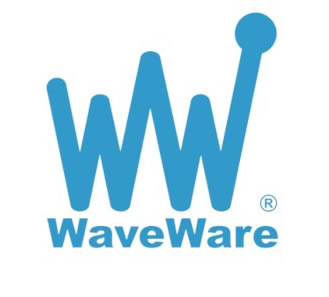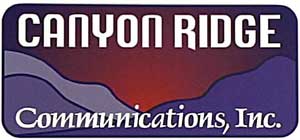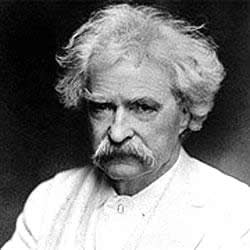Selected portions of the BloostonLaw Telecom Update, and/or the BloostonLaw Private Users Update — newsletters from the Law Offices of Blooston, Mordkofsky, Dickens, Duffy & Prendergast, LLP are reproduced in this section with the firm’s permission.
| BloostonLaw Telecom Update | Vol. 18, No. 16 | April 15, 2015 |
Headlines
IMPORTANT: Corrections to Rural Cost Model Data Due May 11, 2015 The Wireline Competition Bureau (WCB) has published a map of rate-of-return (ROR) study area boundaries and central office locations (Node0) that it intends to incorporate into the next version of the Alternative Connect America Cost Model (A-CAM) (WC Docket No. 10-90). ROR carriers have until May 11, 2015, to submit any proposed corrections to the study area boundary and Node0 location data through the A-CAM Support desk. We strongly advise all ROR carriers to review the study area boundary and Node0 location data released by the WCB for accuracy and to submit corrections, as necessary, as this will be the basis for determining whether a ROR carrier may want to voluntarily select universal service support based on the model. Review of the data may also indicate whether the model is based on faulty data and, therefore, subject to challenge as flawed. A-CAM calculates the forward-looking economic costs of deploying and operating a fiber-to-the-premise (FTTP) network in ROR areas. In the April 2014 Connect America Order and FNPRM, the FCC directed the WCB to make adjustments to the Connect America Cost Model so that it could be used for ROR carriers to receive model-based support, including incorporating the results of the WCB's study area boundary data collection. According to the WCB, the model creates a network topology that routes plant along roads from a central office location and it then calculates the costs associated with that network topology. The WCB states that in large part, it used the study area boundary data submitted by ROR carriers and state utility commissions as-is to define study area boundaries and exchanges. However, in some cases, the WCB states that it modified the submitted data to address certain discrepancies, such as overlaps and voids in data so that the data could be used in the model. To resolve overlaps "in a consistent and unbiased way", the WCB states that it attributed the overlapped area to the study area with the longest 'intersecting' boundary." In cases where the submitted boundary of the exchanges differed from the modified study area boundary, the WCB then modified the exchanges to match the edges of the study area boundary. It identified coastal islands that lack a connection to the continental United States (including Alaska) as separate exchanges and it merged exchanges that were intersected by a state border if they were in the same study area (thus merging study areas and exchanges that cross state boundaries to reflect the likely physical network rather than the political boundary). To determine Node0 (central office locations), the WCB used data from GeoResults. GeoResults' website states that its National Wire Center Boundary Database "contains a proprietary set of Wire Center boundary files that represent the actual wire center serving area for each of the over 20,000 Incumbent Local Exchange Carrier (ILEC) central office buildings in the United States." However, according to the WCB, not all service areas had GeoResults central office locations and in those cases, the WCB "placed Node0 in whatever Geographic Names Information System (GNIS) populated place was nearest to the central office location for a given exchange previously used by the Commission in its prior modeling." According to the U.S. Geological Survey website, GNIS was "developed by the U.S. Geological Survey in cooperation with the U.S. Board on Geographic Names" and "contains information about physical and cultural geographic features in the United States and associated areas, both current and historical (not including roads and highways). The database holds the Federally recognized name of each Feature and defines the location of the feature by state, county, USGS topographic map, and geographic coordinates." According to the WCB, "the final step was to ensure that each exchange was associated with a single Node0 location. If exchanges had more than one Node0 location greater than 10 airline miles apart, we split the exchanges into smaller areas." The WCB also consolidated some small exchanges "in cases where a GeoResults or GNIS-HCPM Node0 point was within one mile of an adjacent exchange boundary within the same study area and the adjacent exchange had no GeoResults Node0 location." According to the WCB, "[i]f an exchange had neither a GeoResults Node0 nor a GNIS-HCPM point, we used the most central GNIS point, and if there was no GNIS point, we used the interior centroid of the exchange as the Node0 location." ROR carriers that wish to obtain the GeoResults central office (Node0) locations data for review must execute the relevant acknowledgement of confidentiality, licensing, and nondisclosure documents released as attachments to the Third Supplemental Protective Order. ROR carriers can request the A-CAM Node0 File for their incumbent territories at no charge through the A-CAM Support desk ( cacmsupport@costquest.com ). They also can purchase a full national table of all ROR Node0 locations for a nominal fee. The firm plans to issue a separate Call to Action with more information later this week. FCC To Implement Online Response System for Informal Complaints Last week, a number of carriers received an invitation from FCC staff regarding a demonstration of its as-yet-unannounced Consumer Help Center Informal Complaint response system. According to discussions with staff, the new Consumer Help Center will ultimately become the only way to receive and respond to Informal Complaints. Although the system has apparently been functional since December, the FCC has not yet put out a Public Notice notifying carriers of its existence, its future role, or officially mandating its use. We were told to expect such a Public Notice in the near future. According to the demonstration, carriers are not able to register themselves with the system via the Consumer Help Center website; doing so only creates a user account that will not be associated with any complaints that are filed. Therefore, it is important that carriers that were not contacted directly by the FCC and guided through the correct registration process await further FCC instruction before attempting to use the system. We will be glad to help any affected clients navigate the new system. Open Internet Order Published in Federal Register, Effective June 12 On April 13, the FCC published in the Federal Register its March 12, 2015 Open Internet Report and Order on Remand, Declaratory Ruling and Order. As a result, the Order will become effective June 12, 2015, except for certain enhancements made to the transparency rules, which are collections of information requiring separate OMB approval. Rules going into effect include: - The “bright line” prohibitions against blocking and throttling (subject to exceptions for reasonable network management) and paid prioritization;
- a catch-all, backstop prohibition against unreasonable interference with or disadvantaging of end user or edge provider use of lawful content, applications, services or devices, likewise subject to an exception for reasonable network management;
- Section 201 of the Act (which prohibits unjust and unreasonable prices and practices); Section 202 (which prohibits unreasonable discrimination and undue preferences);
- Section 208 (which governs customer complaints);
- Section 222 (which governs Consumer Proprietary Network Information (CPNI) and related customer privacy protections);
- Section 224 (which governs access to poles, ducts, conduits and rights-of-way);
- Sections 225, 255 and 251(a)(2) (which deal with access by persons with disability), except that requirements for Telecommunications Relay Service contributions by newly Title II-regulated retail broadband Internet access service providers are forborne until the FCC completes a rulemaking regarding such contributions;
- Sections 254 and 214(e) (which deal with universal service), except that requirements for Universal Service Fund contributions by newly Title II-regulated retail broadband Internet access service providers are forborne until the FCC completes a rulemaking regarding such contributions and except that subsections 254(g) (regarding rate averaging by inter-exchange carriers) and 254(k) (regarding cross-subsidization of competitive services) are forborne;
- Section 229 (regarding Communications Assistance to Law Enforcement Act (CALEA) rulemakings and oversight; and
- (g) from 223 and 231 (regarding obscene and illicit content).
- Portions of the Order that are not yet in effect because of pending OMB approval include:
- Disclosure of commercial terms, including price, other fees, and data caps or allowances;
- Disclosure of the packet loss network performance characteristic;
- Disclosure of whether certain services rely on particular network practices and whether similar functionality is available to applications and services offered over broadband Internet access service;
- Disclosure of network practices that are applied to traffic associated with a particular user or user group, including any application-agnostic degradation of service to a particular end user, and the purposes of those network practices.
We note, however, that small providers will have a temporary exemption from these requirements when they do become effective. FCC Grants First Batch of AWS-3 Licenses; Fate of DISH DEs Still Unknown Last Thursday, the FCC announced the grant of AWS-3 licenses to eleven (11) long-form applicants with respect to whom there were no petitions to deny or other requests pending. Public Notice ( DA 15-432 ) granted long-form applications filed by AT&T, Verizon and T-Mobile, along with a handful of small and/or rural carriers (including several BloostonLaw clients). These applications represent half of the twenty-one (21) long-form applications that the FCC Wireless Bureau identified last month as accepted for filing . The FCC is expected to announce its action on the remaining ten (10) long-form applications that it accepted in a subsequent Public Notice. Conspicuously missing from the “accepted for filing” list issued in early March were long form applications filed by Northstar Wireless and SNR Wireless LicenseCo, small business Designated Entities (DEs) owned 85% by DISH Network and which had winning bids worth $13.3 billion (just under $10 billion after factoring in the 25% small business bid credit). The FCC’s staff is presumably wrestling with Northstar and SNR’s applications because they “pushed the envelope” with respect to small business eligibility and the level of control that DISH appears to have over their joint bidding. Long-form applications from eight (8) other companies have also yet to be accepted for filing, including applications of US Cellular’s DE Advantage Spectrum, LP and investment vehicle Cyprus Cellular, LP, presumably because additional information is required before the applications can be processed by FCC Wireless Bureau staff. We expect there is a fair amount of hand wringing going on right now at the FCC (and possibly the DOJ) because of the combined $3.3 billion in small business bid credits granted to Northstar and SNR on top of alleged joint bidding abuses by DISH. The Commission has the difficult task of dealing with the loopholes in the DE rules that facilitated DISH’s bidding strategy at least in part, and the aggressive bidding by Northstar and SNR (allegedly in concert with one another at times) that helped to drive Auction 97 bidding through the roof. Given this dynamic, and the possibility of having to turn away a $10 billion payday to the US Treasury, it may be very difficult for the FCC to dismiss the Northstar and SNR long-form applications or to issue significant fines against DISH. At the end of it all, we expect that the FCC will use the DISH controversy as the basis for adopting some changes in the FCC’s DE rules. Acceptance of the Northstar and SNR long-forms will trigger their final payment requirements, and then the FCC staff will review the long-form applications in parallel with its investigation into alleged joint bidding abuses. We also expect that the FCC will issue a separate order addressing the alleged collusive bidding by DISH, Northstar and SNR. While it is possible that the FCC may find a violation of the anti-collusion rules and propose fines, and/or the DOJ may elect to pursue a case for violation of antitrust or anti bid-rigging laws, we believe it likely that the FCC would punish any violations it may find through the issuance of fines rather than a denial of auction licenses. Law & Regulation
FCC Expected to Tinker with 3.65 GHz Rules During Open Meeting Scheduled for April 17 The FCC’s next Open Meeting is currently scheduled for April 17, 2015. At the meeting the Commission will consider: - a Report and Order and Second Further Notice of Proposed Rulemaking that would leverage innovative spectrum sharing technologies to make 150 megahertz of contiguous spectrum available in the 3550-3700 MHz band for wireless broadband and other uses; and
- a Public Notice requesting additional comment on how to ensure that small businesses, rural telephone companies, and businesses owned by members of minority groups and women have an opportunity to participate in the provision of spectrum-based services, while ensuring that there are adequate safeguards to protect against unjust enrichment to ineligible entities.
As part of the 3550-3700 MHz initiative, it is expected that the FCC will incorporate the existing 3.65 GHz band utilized by many entities into the new regime in a way that may significantly change how this band is used; and therefore, the FCC will likely propose a grandfathering period of 3 to 5 years for existing 3.65 GHz licensees. Thereafter, these licensees will probably be required to rely on the use of dynamic location technology rather than the existing database arrangement, in order to avoid harmful interference. Audio/Video coverage of the meeting will be broadcast live with open captioning over the Internet from the FCC Live web page at www.fcc.gov/live . Rep. Mooney Introduces Bill Exempting Broadband Providers from USF Contributions On March 26, Rep. Alexander Mooney (R-W.Va.) introduced a bill entitled Freedom from Internet Tax Act, which proposes to amend the Communications Act of 1934 to exempt providers of broadband Internet access service from Federal USF contributions. Specifically, the bill revises Section 254(d) by adding an exception for, “a person engaged in the provision of broadband Internet access service (as defined in the rules adopted in the Report and Order on Remand, Declaratory Ruling, and Order that was adopted by the Commission on February 26, 2015 (FCC 15–24)), insofar as such person is so engaged.” At the moment, the bill has no cosponsors, and Referred to the House Committee on Energy and Commerce. According to USAC’s second-quarter appendices, the 2015 annualized projected high cost support for West Virginia, Rep. Mooney’s state, is $44,311,437 (no. 35 in the country). FCC Enforcement Bureau Signals Intent to Crack Down Even as It Reduces Force The FCC’s Enforcement Bureau has indicated that it will be undergoing a significant streamlining — including a substantial reduction in field office personnel — in an effort to reduce the enforcement budget by millions of dollars. However, even as this scaling back of resources is being implemented, the Bureau has promised that enforcement efforts will be vigorous; and that it will still be able to respond to interference and other problems in 80% of the country within “a matter of hours.” Bill Davenport, Deputy Bureau Chief, indicated on Monday that the FCC will target interference, continuous operation on channels and 911 violations as a starting point. While regulated entities may think that any reduction in enforcement resources will make compliance with FCC rules less important, the unfortunate outcome of this cut back is pressure on the FCC to deal very harshly with any violations coming to its attention. And small carriers and licensees are the easiest targets when looking to make an example that will hopefully scare larger regulatees into compliance. Industry
FCC Announces Public Workshop on E-Rate Funded Fiber Build Projects The FCC’s Wireline Competition Bureau and the Office of Strategic Planning & Policy Analysis have announced that a public workshop will be held to provide schools, libraries, providers, and state and local policy makers with information and tools for planning fiber build projects under the new E-rate rules. The workshop will be held on May 20, 2015 starting at 1 p.m., at FCC headquarters in Washington, DC. The workshop will provide an overview of the new E-rate rules governing installment payments, state matching for fiber builds, leasing and management of dark fiber, and self-construction. It will explore best practices for fiber builds and practical challenges to aligning fiber builds with the E-rate application process and other E-rate rules, and will focus particular attention on the issues applicants need to consider in order to choose the most cost-effective option for deploying fiber. Audio and video coverage of the discussion will be available on the FCC’s Web page at www.fcc.gov/live . Nevada Considers Regulation on Internet Traffic Path According to USA Today , Nevada could become the first state in the nation to mandate the physical route government data takes as it travels the Internet under a bill being considered by the Nevada Legislature. Nevada Senate Bill No. 289, introduced by Assembly Majority Leader Paul Anderson, R-Las Vegas, and Sen. Mo Denis, D-Las Vegas, requires each provider of Internet protocol service which serves an agency or political subdivision the state of Nevada to interconnect and maintain a peering agreement within the state with all other such providers of Internet protocol service. The upshot would be that internet traffic from state offices would only pass through servers based in Nevada. The article states that the bill’s sponsors argue that their measure is “critical for cybersecurity because it would keep government Internet traffic confined to the state, instead of allowing that data to travel traditional paths that often include out-of-state connection points,” but that critics of the bill say it would create “a single-point bottleneck” that could make data more vulnerable to attack, not less vulnerable. Deadlines
MAY 1: FCC FORM 499-Q, TELECOMMUNICATIONS REPORTING WORKSHEET. All telecommunications common carriers that expect to contribute more than $10,000 to federal Universal Service Fund (USF) support mechanisms must file this quarterly form. The FCC has modified this form in light of its recent decision to establish interim measures for USF contribution assessments. The form contains revenue information from the prior quarter plus projections for the next quarter. Form 499-Q relates only to USF contributions. It does not relate to the cost recovery mechanisms for the Telecommunications Relay Service (TRS) Fund, the North American Numbering Plan Administration (NANPA), and the shared costs of local number portability (LNP), which are covered in the annual form (Form 499-A) that was due April 1. JUNE 1: FCC FORM 395, EMPLOYMENT REPORT. Common carriers, including wireless carriers, with 16 or more full-time employees must file their annual Common Carrier Employment Reports (FCC Form 395) by May 31. However, because May 31 falls on a Sunday this year, the filing will be due on June 1. This report tracks carrier compliance with rules requiring recruitment of minority employees. Further, the FCC requires all common carriers to report any employment discrimination complaints they received during the past year. That information is also due on June 1. The FCC encourages carriers to complete the discrimination report requirement by filling out Section V of Form 395, rather than submitting a separate report.
JULY 1: FCC FORM 481 (CARRIER ANNUAL REPORTING DATA COLLECTION FORM). All eligible telecommunications carriers (ETCs) must report the information required by Section 54.313, which includes outage, unfulfilled service request, and complaint data, broken out separately for voice and broadband services, information on the ETC’s holding company, operating companies, ETC affiliates and any branding in response to section 54.313(a)(8); its CAF-ICC certification, if applicable; its financial information, if a privately held rate-of-return carrier; and its satellite backhaul certification, if applicable. Form 481 must not only be filed with USAC, but also with the FCC and the relevant state commission and tribal authority, as appropriate. Although USAC treats the filing as confidential, filers must seek confidential treatment separately with the FCC and the relevant state commission and tribal authority if confidential treatment is desired.
JULY 1: MOBILITY FUND PHASE I ANNUAL REPORT. Winning bidders in Auction 901 that are authorized to receive Mobility Fund Phase I support are required to submit to the Commission an annual report each year on July 1 for the five years following authorization. Each annual report must be submitted to the Office of the Secretary of the Commission, clearly referencing WT Docket No. 10-208; the Universal Service Administrator; and the relevant state commissions, relevant authority in a U.S. Territory, or Tribal governments, as appropriate. The information and certifications required to be included in the annual report are described in Section 54.1009 of the Commission’s rules.
JULY 31: FCC FORM 507, UNIVERSAL SERVICE QUARTERLY LINE COUNT UPDATE. Line count updates are required to recalculate a carrier's per line universal service support, and is filed with the Universal Service Administrative Company (USAC). This information must be submitted on July 31 each year by all rate-of-return incumbent carriers, and on a quarterly basis if a competitive eligible telecommunications carrier (CETC) has initiated service in the rate-of-return incumbent carrier’s service area and reported line count data to USAC in the rate-of-return incumbent carrier’s service area, in order for the incumbent carrier to be eligible to receive Interstate Common Line Support (ICLS). This quarterly filing is due July 31 and covers lines served as of December 31, 2014. Incumbent carriers filing on a quarterly basis must also file on September 30 (for lines served as of March 31, 2015); December 30 (for lines served as of June 30, 2015), and March 31, 2016, for lines served as of September 30, 2015). JULY 31: CARRIER IDENTIFICATION CODE (CIC) REPORTS. Carrier Identification Code (CIC) Reports must be filed by the last business day of July (this year, July 31). These reports are required of all carriers who have been assigned a CIC code by NANPA. Failure to file could result in an effort by NANPA to reclaim it, although according to the Guidelines this process is initiated with a letter from NANPA regarding the apparent non-use of the CIC code. The assignee can then respond with an explanation. (Guidelines Section 6.2). The CIC Reporting Requirement is included in the CIC Assignment Guidelines, produced by ATIS. According to section 1.4 of that document: At the direction of the NANPA, the access providers and the entities who are assigned CICs will be requested to provide access and usage information to the NANPA, on a semi-annual basis to ensure effective management of the CIC resource. (Holders of codes may respond to the request at their own election). Access provider and entity reports shall be submitted to NANPA no later than January 31 for the period ending December 31, and no later than July 31 for the period ending June 30. It is also referenced in the NANPA Technical Requirements Document, which states at 7.18.6: CIC holders shall provide a usage report to the NANPA per the industry CIC guidelines … The NAS shall be capable of accepting CIC usage reports per guideline requirements on January 31 for the period ending December 31 and no later than July 31 for the period ending June 30. These reports may also be mailed and accepted by the NANPA in paper form. Finally, according to the NANPA website, if no local exchange carrier reports access or usage for a given CIC, NANPA is obliged to reclaim it. The semi-annual utilization and access reporting mechanism is described at length in the guidelines. Calendar At A Glance
April
Apr. 21 – Reply Comments are due on 911 Policy NPRM. May
May 1 – FCC Form 499-Q (Quarterly Telecommunications Reporting Worksheet) is due.
May 11 – Deadline to submit revisions to Alternative Connect America Cost Model map.
May 18 – Short Form Tariff Review Plan is due.
May 29 – Comments on Short Form Tariff Review Plans are due. June
Jun. 1 – FCC Form 395 (Annual Employment Report) is due.
Jun. 5 – Reply comments on Short Form Tariff Review Plans are due.
Jun. 16 – Tariffs filed on 15 days’ notice are due.
Jun. 23 – Petitions to Suspend or Reject Tariffs filed on 15 days’ notice are due.
Jun. 24 – Tariffs filed on 7 days’ notice are due.
Jun. 26 – Replies to Petitions to Suspend or Reject Tariffs filed on 15 days’ notice are due.
Jun. 26 – Petitions to Suspend or Reject Tariffs filed on 7 days’ notice are due by noon Eastern Time.
Jun. 29 – Replies to Petitions to Suspend or Reject Tariffs filed on 7 days’ notice due by noon Eastern Time. July
Jul. 1 – FCC Form 481 (Carrier Annual Reporting Data Collection Form) is due.
Jul. 1 – FCC Form 690 (Mobility Fund Phase I Auction Winner Annual Report) is due.
Jul. 31 – FCC Form 507 (Universal Service Quarterly Line Count Update) is due.
Jul. 31 – Carrier Identification Code (CIC) Report is due. |




































 David George and Bill Noyes
David George and Bill Noyes



































